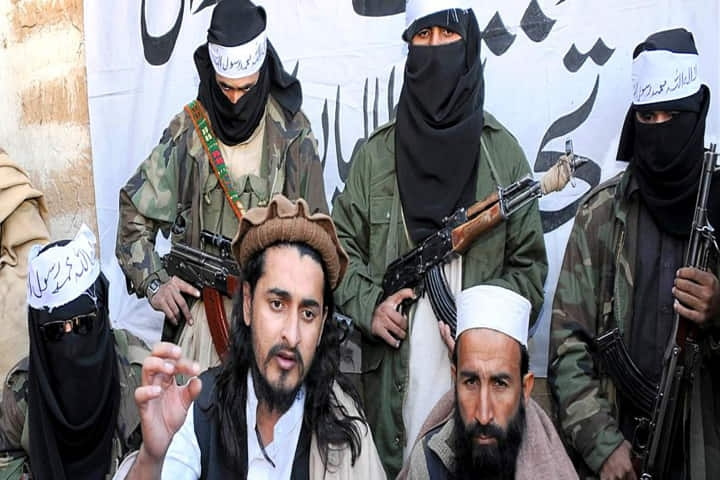At one of his numerous press conferences, exacerbated by the Afghanistan conflict, US President Joe Biden today said that he does not trust anyone, while referring to the Taliban and whether it will honour its commitments made to the Afghan people and the world.
Much to the shock and awe of intelligence agencies, experts and the world at large, the Afghan militant group–which was supposed to have been dismantled by the US–is alive and kicking. With its lightning victory, the Taliban demonstrated in a swift brutal stroke that it was not only lurking in the shadows, but was ready to capture power with credible military force.
Behind Taliban's rise is the political assertion of the ultra-conservative Pashtuns, who dominate the Afghanistan-Pakistan border region. Their objective was clear–to enforce strict Sharia law according to the Sunni version of Islam, eliminate the corrupt warlords from Afghanistan and build a pure Islamic country.
The Taliban is manned by an overwhelming number of Pashtuns, which is also reflective of their numerical dominance with over 42 per cent population in Afghanistan and a heavy presence in north-west Pakistan. In its initial avatar it was largely the ethnic Pashtuns who dominated the Taliban, but over years the group began to see the importance of ethnic diversity and began accepting minority ethnicities as well.
The Taliban, however, remains strongly opposed to the Hazaras primarily because they are Shias and hail from a different ethnic group. The Taliban recently killed nine Hazaras and also blew up the statue of Abdul Ali Mazari, Hazara political leader in Bamiyan. The same place where they had earlier blown up the gigantic Buddhas.
Yet, the Taliban are hardly the true representatives of the Pashtuns who have socially evolved and diversified.

Pashtuns in Pakistan celebrate one of the festivals (Photo: IANS)
If they are the largest and the dominant segment in Afghanistan, they are the second-largest ethnic group in Pakistan with 15-18 per cent population. The Pashtuns have a complicated system of tribes with four main tribes—the Sarbani, the Bettani, the Gharghashti, and the Karlani, which are further divided into kinships or smaller extended families.
In recent history, the Pashtuns leveraged the Russian and British rivalry during the 'Great Game' but lost out when the departing British draw the Durand Line marking the de-facto border between Afghanistan and Pakistan. The Pashtuns have hardly given credence to the Durand Line and have been crossing it at will as they still consider it as Pashtunistan–their divided homeland. With Pakistan fencing off the border, they have voiced their resentment as this breaks their homeland and tribes.
They have been trying to assert themselves politically in both Afghanistan and Pakistan. They have made peace in Pakistan with increasing representation, and their own party the Pashtun Tahafuz Movement (PTM) which advocates a peaceful resolution to the Afghan crisis and an end to militancy.
However, Afghanistan still remains an incomplete dream owing to foreign intervention and ethnic rivalries. With other Afghan groups also seeking political and ethnic assertion in the country's politics, the Pashtuns—right from the Taliban militants to the more peaceful groups–are coming round to the view that the country needs to accommodate and reflect Afghan diversity. This flexibility also got reinforced as the Taliban began the intra-Afghan talks, mediated by Qatar and under the American eye, with different sets of Afghan groups including women. For long, the Taliban considered the ethnic minorities and women as lesser people.
Currently, the Taliban leaders, almost the entire leadership is Pashtun, are seemingly talking with different sections of the Afghan society to create a Taliban government. How far accommodation of the minorities will become successful in a Taliban-run system, will only be known in a few months weeks’ time.
India Narrative profiles some of the important Pashtun leaders.
Mullah Mohammad Omar: The founder and one-eyed leader of the group, is a Pashtun of the Gilzai branch. He reportedly died of tuberculosis in Afghanistan. He was close to Bin laden, and a strict enforcer of the Sharia law.
Mawlawi Hibatullah Akhundzada: One of the top Taliban leaders, he hails from the Noorzai tribe.
Abdul Ghani Baradar: The founder of the Afghan Taliban who comes from the Sadozai tribe of Pashtuns.
Mullah Mohammad Yaqoob: He is currently the military operational commander and the son of Taliban founder Mullah Omar. An ethnic Pashtun of the Hotak tribe—he is part of the Ghilzai branch. He got his religious education in different seminaries of Karachi in Pakistan.
Sirajuddin Haqqani: The deputy leader of the Taliban owes allegiance to the Haqqani network. He is an ethnic Pashtun from the Zardan tribe of Khost.
Abdul Hakim Ishaqzai: Appointed in 2020 as the negotiator for the Taliban, he hails from Afghanistan's Kandahar province bordering Pakistan which gives him more legitimacy as Kandahar is the birthplace of the militant group. A Pashtun, he has been holding discussions in Doha on behalf of the Taliban.
Besides the Taliban leadership, Afghanistan has been governed by other Pashtun stalwarts. These include the Presidents—Hamid Karzai, Ashraf Ghani as well as Mohammad Najibullah.
Ashraf Ghani: The academic-politician, also a former World Bank specialist, he too is a Pashtun from south Afghanistan.
Hamid Karzai: The leader of the powerful Popalzai tribe of Durrani Pashtuns, he came back to Afghanistan from Pakistan after the 9/11 attacks. His main objective was to organise the Pashtuns against the Taliban.
Mohammad Najibullah: The USSR-supported President, Najibullah—who was killed by the Taliban, was an Ahmadzai Pashtun.














